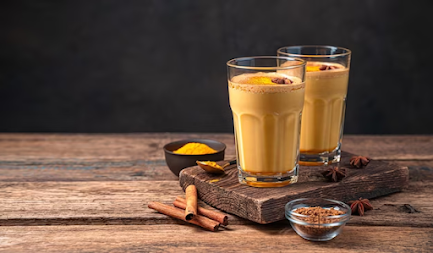The Universal Significance of Chai
Chai, a spiced milk tea originating in India, has transcended borders and become a cultural symbol of hospitality and warmth worldwide. Its aromatic flavors and comforting qualities evoke a sense of community and connection in diverse cultures across the globe. However, chai is more than just a popular beverage; it carries a rich history, varied traditions, and regional variations in ingredients and preparation methods. In this newsletter, we will delve into the cultural importance of chai, its origins and evolution, the rituals and traditions associated with it, the art of making chai, its health advantages, portrayal in literature and popular culture, and its position in building network and fostering connections.
The History and Origin of Chai
Chai's Origin in India
Chai holds a cherished place at the heart of Indian culture, intertwining itself with the fabric of daily life for centuries. The word "chai" itself means "tea" in Hindi, but in India, it specifically refers to a sweet, spiced tea often served with milk.
Across different regions, the recipe for chai dances to the tune of local flavors, resulting in a symphony of spices like fragrant cardamom, warming cinnamon, invigorating ginger, and aromatic cloves. These harmonize with the robustness of black tea, creating a fusion that is delicately balanced with sweeteners like sugar or the golden touch of honey.
Chai's Journey Around the World
Today, chai is enjoyed across the globe in various forms. In the Middle East and North Africa, chai is often prepared with mint and served in small glasses. In Europe and North America, a popular rendition is the chai latte, made with a blend of black tea, spices, and steamed milk.
Also Read : Here
Chai Rituals and Traditions Across the World
Chai in the Middle East and North Africa
In the Middle East and North Africa, chai holds great importance as a symbol of hospitality. It is typically prepared with fresh mint and sugar, and served alongside dates, nuts, or other sweets. Offering chai to guests is a gesture of generosity and hospitality, and it is considered impolite to refuse a cup.
Chai in Europe and North America
In Europe and North America, chai is embraced as a comforting and cozy drink, particularly suitable for colder days. It is commonly prepared with a combination of black tea, spices, and steamed milk. Chai can be enjoyed in cafes or made at home, and in some places, it is even presented as an alternative to coffee due to its similar caffeine content.
The Art of Making Chai: Ingredients and Techniques
The Basic Chai Recipe
Although there are numerous variations, the fundamental chai recipe typically includes black tea, whole spices like cardamom, cinnamon, and cloves, milk, and a sweetener. To prepare chai, the spices are simmered with water to extract their flavors, then black tea is added. Afterward, the mixture is strained and combined with hot milk and sweetener to taste.
Variations in Chai Making
The art of making chai offers endless possibilities for customization based on personal preferences and regional influences. Some individuals prefer a stronger, spicier chai, while others lean towards a sweeter, creamier version. Different regions incorporate various types of tea, such as green tea or rooibos, and distinct spices like nutmeg or fennel. The key lies in achieving the perfect balance of flavors to create a comforting and invigorating drink.
Health Benefits of Chai: Unveiling the Science Behind the Brew
Chai, being a blend of spices and tea, has been cherished for its potential health benefits throughout history. Recent research has shed light on the positive impact of chai on well-being. For instance, chai unfolds its hidden treasures of wellness through a bounty of antioxidants, embracing the likes of vibrant catechins and captivating polyphenols. These guardians of health work in tandem, orchestrating a harmonious symphony to combat oxidative stress and quell the flames of inflammation within the body.

Comments
Post a Comment